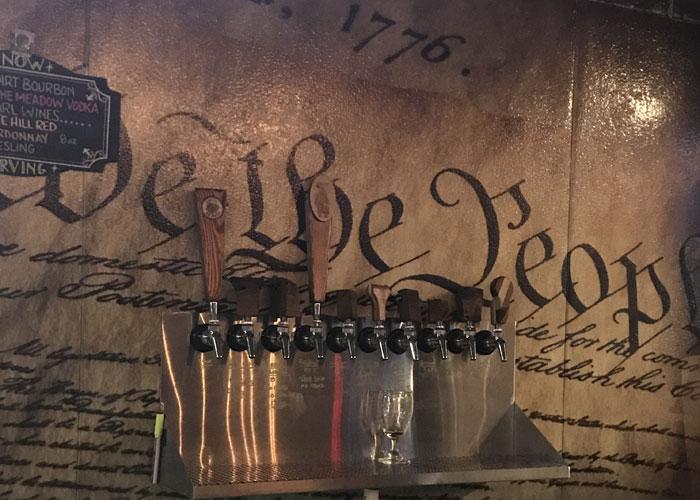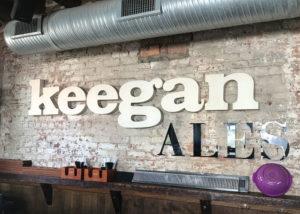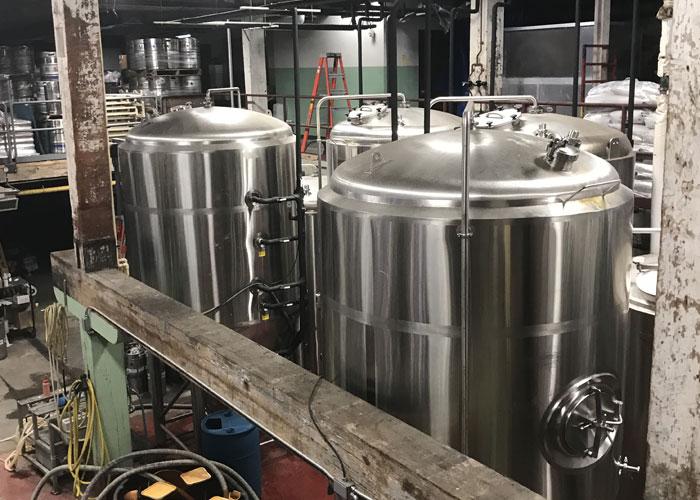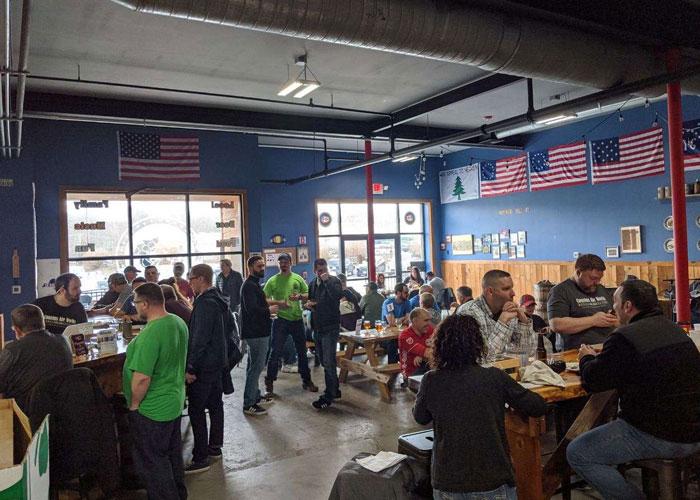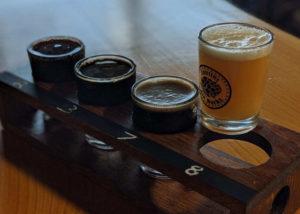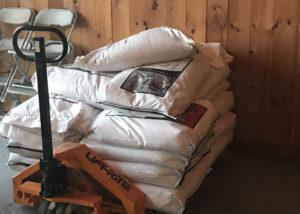MID-HUDSON – When Tommy Keegan opened Keegan’s Ales in 2003, it seemed as though craft beer was a novel concept in the Hudson Valley.
The industry had already taken flight in the West Coast and more metropolis parts of the East Coast, but had yet to reach all of upstate New York.
Today, there are over 65 breweries in the Hudson Valley, each of which boasts its own unique flavors, and unique stories.
“It’s just getting more and more competitive,” said Keegan, whose brewery has been a staple in Kingston. “The craft beer drinker these days is always looking for that new thing.”
Keegan maintains that while the competition is increasing, his brewery remains a stalwart in the industry.
“Besides being the first, we’re also the most consistent,” he said. “I don’t chase trends.”
The industry has become an unstoppable trend for New York state residents, from millennials who seek quality, locally made products to families looking for a fun night out.
The rise of craft breweries
Across New York State, there are 434 breweries, according to the New York State Brewers Association. In total, they generated $5.4 billion in revenue, most of which stems from sales, production and tasting room operations.
Additionally, there were a reported 46.8 million brewery visits in 2018, a boon for state tourism.
The economic impact of craft breweries in New York State has a lot to do with the Cuomo administration.
In 2012, a trio of bills that promised to provide incentives for craft brewers were passed and signed by Governor Andrew Cuomo.
The legislation generated bipartisan support, as they promised jobs and growth for a fledgling agricultural sector in upstate New York.
“There’s been a lot of energy and effort in Albany to make it more cost affordable and easier legally to open up breweries,” said Paul Halayko, owner of Newburgh Brewing Company, which opened in 2012.
At the time, there was potential in the industry, as it was generating more than $200 million in revenue up until then.
Wineries had already provided economic growth in the state’s agricultural sector, and breweries seemed like they could provide steady competition.
Millennials and their favorite beers
Craft beer continues to be especially popular with millennials, with 57 percent of the age group stating that they drink craft beer weekly, in a 2016 survey from the Brewers Association.
Halayko attributes this to how millennials like to diversify their drinking options, so long as what they are consuming is good.
“Millennials want to drink an assortment of everything, but they also want an elevated experience when they drink,” he said, “so a millennial is probably more interested in a well-made, old-fashioned drink then they are in, say, a jack and coke.”
Craft beer has a diversity of flavors due to its locally grown brewing style, which makes for an interesting palette that is appealing to millennials.
“In the beer world, there’s so many different flavors than just your large macro style breweries,” said Aaron Browne, founder of Cousin Ale Works in Wappingers Falls.
Keegan states that craft beer appeals to the social issues on the brain for many millennials, who often advocate for local businesses over corporations and for protecting the environment.
“They want to support local for environmental reasons, as well as local community reasons,” he said.
Craft beer was not something that was easily accessible to previous generations, which Keegan states is another reason why millennials gravitate towards this beverage phenomenon.
“People that are in their 60s or 70s, or the parents of these Millennials, didn’t have the option to try [craft beer],” he said. “There wasn’t a brewery on every corner that there is now.”
Cheers to craft breweries
For those old-school drinkers who are concerned that the places you go where everybody knows your name will suddenly go extinct, there will always be a place for the traditional bar.
If anything, craft breweries provide options for a family night out, as many are not open too late.
“I’m not open that late. I’m open till nine,” said Browne. “I think the bar brings more of an adult feeling atmosphere is a brewery can bring a little mixture of family and adult.”
Domestic beer sales still remain significantly higher than craft beer sales, despite the latter’s growing popularity. Data from the Brewers Association suggests that craft beer sales only make up 13 percent of the over $114 billion beer market, a point Keegan concedes to.
“The whole entire craft beer industry in the United States is still well under 15 percent of the amount of beer,” he said, “so that means that more than 80 percent of the beer is still Bud, Miller and Coors.”
Still, overall beer sales were down 1 percent in 2018 per the Brewers Association, while craft beer sales experienced a 4 percent uptick.
“I can see craft breweries heading in the direction [of overtaking the bar],” said Halayko, “but I don’t know if that will happen.”
Ultimately, “the bar will always be a mainstay,” said Browne.
How to make quality brews
There is a method to the madness of making quality product, which Keegan showcased at his in-house brew production facility.
You start out with germinated barley that can be temperature-controlled depending on the type of ale you are looking to produce. You can mix with different flavors to give your beer that vibe you’re going for.
Each brewer has a different flavor scheme that they experiment with, but Keegan’s Ales likes to stick to what they do best.
“There’s so many breweries that are making one beer and then they don’t make it again,” he said. “We have beers that people can rely on.”
Those include the award-winning Mother’s Milk, which is inspired by the nickname Irishmen often give to Guinness beer.
Described as a dark and creamy stout, it features hints of oatmeal, chocolate, and—appropriately—milk.
A spinoff, Joe Mama’s Milk, takes the same recipe and blends with Kingston coffee joint Monkey Joe’s cold-coffee extract.
Newburgh Brewing Company features a monthly beer that is a collaboration with a fellow Hudson Valley brewery. Next month will bring CaptainBoss IPA, a collaboration with Captain Lawrence Brewing in Hastings-on-Hudson.
Currently on tap is MegaBoss IPA, described as a bright and tropical beer for those with sweeter tastes. Those in the mood for something darker can try the Brown Ale, a traditional English-style beer.
Browne describes the beers that are on tap at Cousin Ale Works as “New England-style.”
“I really focus on the malt-style of beer,” he said.
Cousin Ale Works also has collaborated with local coffee makers, with the barrel aged ugly mug coffee stout featuring coffee stout from the Ugly Mug coffee shop in Poughkeepsie and vanilla bean.
The brewery’s chocolate PAWter (named after Browne’s beloved dog Porter) is brewed with cocoa roasted in upstate New York, true to the brewery’s commitment to make all of their beers with 100 percent New York state ingredients.

